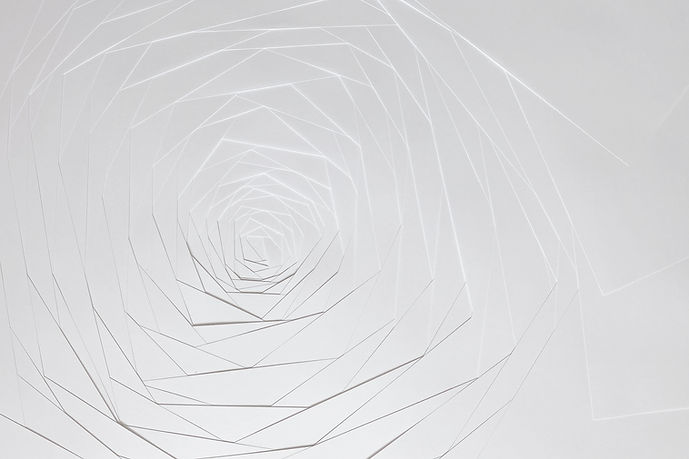



Our Research
We present a comprehensive experimental and theoretical study of angle-resolved polarized Raman scattering (ARPRS) in Np-cut KGd(WO4)2 (KGW) crystals, focusing on the prominent Raman shifts at 768 cm-1 and 901 cm-1. Raman intensity distributions were recorded under both linear and circular polarization conditions, and the resulting polar plots were interpreted using Raman tensor analysis. The results reveal anisotropic behavior consistent with coupled Ag vibrational modes and indicate spectral overlap from multiple unresolved vibrational contributions. These findings provide valuable insight into the complex vibrational dynamics of KGW and have important implications for optimizing the performance of Raman-active crystals in high-power laser systems.

Our Research
We numerically analyze the mode decompositions of second-harmonic Hermite–Gaussian beams to enhance understanding of their propagation characteristics. A robust theoretical model is developed to investigate phase transitions in transformed second-harmonic Hermite–Gaussian modes, driven by the rotation of an astigmatic mode converter. These transitions critically influence vortex-antivortex (V-AV) dynamics and interactions, including approach, annihilation, creation and repulsion processes. Our analysis reveals that the total topological charge remains conserved, despite intensity variations, phase changes, and V-AV interactions. Experimental validation, conducted using a solid-state laser with intracavity second-harmonic generation, demonstrates excellent agreement with theoretical predictions.



Our Research
We develop a wave representation to characterize the propagation evolution of vortex lattice beams, which are produced through a frequency-doubling process of various high-order laser modes, followed by mode conversion. Their phase fields and phase gradients are further analyzed to verify the topological charge for each isolated vortex, as well as the symmetry and net charges of the vortex lattices. In the experiment, we demonstrate the generation of frequency-doubled high-order modes by utilizing an off-center pumped solid-state laser combined with intracavity second-harmonic generation. Subsequently, we employ an astigmatic mode converter to transform the generated frequency-doubled laser modes, obtaining vortex arrays. The strong agreement between theoretical analysis and experimental data not only validates the derived formula but also confirms the creation and characteristics of the vortex lattice beams.

Our Research
The criteria for achieving adjustable rotation of optical vortices are analyzed and used to design a diode-pumped solid-state laser that incorporates intracavity second harmonic generation within a concave-flat cavity to produce frequency-doubled Hermite–Gaussian (FDHG) modes. These FDHG modes are subsequently employed to generate various structured lights containing 2, 4, and 6 nested vortices using an external cylindrical mode converter. Through theoretical exploration, we propose that increasing the radius of curvature of the concave mirror and extending the cavity length can enhance the rotational angles of multiple vortices by expanding the adjustable range of phase shift for FDHG modes. Moreover, theoretical analyses assess vortex rotation concerning the positions of a nonlinear medium, successfully validating the experimental observations and elucidating the phase structures of the transformed beams.



Our Research
Various high-order orange beams (HOBs) at 588 nm are produced via off-center pumped Nd:YVO4/KGW Raman lasers. We experimentally confirm that the HOBs can be fairly sustained at the incident pump power of 2.88 W, where the average output powers are overall from 300 mW to 160 mW with increasing the off-center displacements from 0.14 mm to 0.21 mm. The HOBs are further transformed by using an astigmatic mode converter to generate a variety of structured lights with optical vortices. Moreover, theoretical wave functions are analytically derived to characterize the propagation evolution of the converted HOBs. The experimental patterns for all propagating positions are excellently reconstructed by the derived wave functions, and the evolution of phase structures is numerically calculated to manifest the robust optical vortices.

Our Research
We employ a selectively pumped solid-state laser with stimulated Raman scattering and second-harmonic generation to generate frequency-doubled lasing modes (FDLMs) at 588 nm. The FDLMs are transformed by using an external cylindrical mode converter to generate various structured beams with multiple optical vortices. Theoretical analyses clearly reveal the relationship between the mode components in the laser emission and the transverse displacement of the off-center pumping. We further verify that the experimental results for the transformed FDLMs can be numerically reconstructed with a theoretical model. By analyzing the phase structures of the converted beams, it can be demonstrated that the number of vortices rises from 2 to 19 with increasing off-center displacement.
